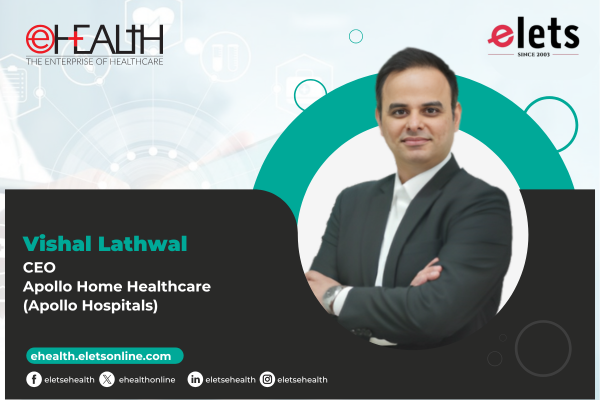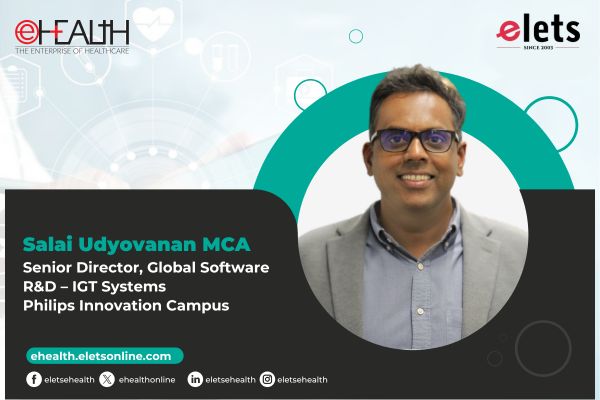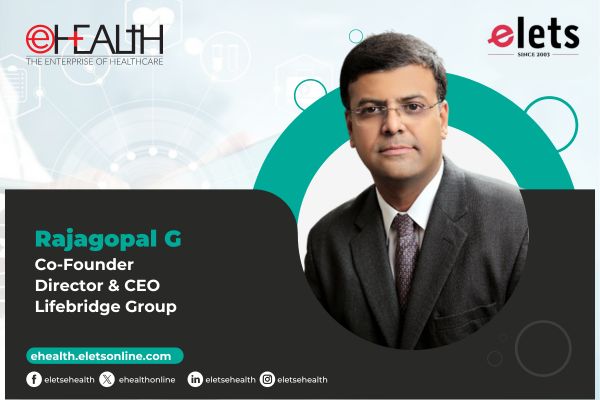
In an era where precision medicine and digital transformation are redefining surgical care, the global surgical robotics market is projected to exceed USD 20 billion by 2030, driven by rising demand for minimally invasive procedures and AI integration. In an exclusive discussion, Dr Mahendra Bhandari, CEO, Vattikuti Foundation, connects with Dr. Asawari Savant from Elets News Network (ENN), to offer critical insights into the evolving landscape of surgical innovation, the future of AI-powered care, and the road ahead for emerging markets and medtech startups. Edited excerpts
How has robotic surgery evolved over the years, and what emerging trends do you foresee in this space?
Robotic surgery has seen faster adoption than even mobile technology. It is now a mainstay in modern operating rooms. However, cost remains a significant barrier, particularly in resource-constrained settings. With the emergence of multiple robotic system manufacturers, cost-effective solutions are on the horizon. Additionally, the integration of AI-powered decision support systems is poised to enhance surgical safety, workflow efficiency, and real-time training, making precision surgery more accessible globally.

What are the key barriers to the adoption of robotic surgery in emerging markets, and how can they be addressed?
The foremost challenges are the high initial capital investment and ongoing maintenance costs of robotic systems. However, the landscape is changing with the advent of more affordable robotic solutions. The next potential bottleneck is the shortage of skilled surgeons trained in robotic techniques. Addressing this will require structured training pipelines, simulation-based learning, and long-term strategic investments in human capital.

As Director of Robotic Research and Education at the Vattikuti Urology Institute, what would you highlight as the most transformative advancement in robotic surgery?
At the Vattikuti Urology Institute, Henry Ford Hospital, we built one of the largest global databases on robotic radical prostatectomy and pioneered the development of new robotic procedures. Among the most impactful contributions was the evolution of robotic-assisted kidney surgery and robotic kidney transplantation into globally accepted standards of care. These innovations not only redefined surgical precision but also broadened access to minimally invasive procedures, dramatically improving patient outcomes. Our emphasis on scientific rigor, academic dissemination, and data-driven innovation underpinned this transformation.

At Vattikuti Foundation, which initiatives according to you, have had the greatest global impact on healthcare accessibility and surgical excellence?
The Vattikuti Foundation played a pivotal role in the proliferation of robotic surgery, particularly in India. Through strategic investments in training, infrastructure, and surgeon mentorship, we have supported the upskilling of approximately 500 robotic surgeons across multiple specialties. Our programs range from short-term fellowships to comprehensive residency-integrated training modules, significantly enhancing the quality and accessibility of robotic surgical care.

How do you see AI, AR, and VR shaping the future of urology and surgical practice at large?
There is a significant gap between the potential of AI in surgical practice and its current real-world applications. Surgeons should adopt AI-driven tools to optimize workflow, ensure procedural safety, and enhance patient outcomes. Computer vision, for example, is enabling pre-operative planning with a level of detail that significantly reduces intraoperative uncertainty. Large language models are streamlining surgical education and medical research, accelerating the development and dissemination of clinical knowledge.
What do you see as the most promising innovation in urology today, and how could it solve current healthcare challenges?
The emergence of digital twins—virtual replicas of human organs like the kidney and prostate—holds transformative potential. These models enable surgeons to simulate treatment strategies in silico before applying them to actual patients, drastically improving personalization and safety. Moreover, the advancement of simulation-based training is creating proficiency-based learning environments, ensuring that surgeons are fully prepared before operating on real patients. The ability to quantitatively measure every surgical action and link it to clinical outcomes is redefining how we evaluate skill and improve quality.
Could you share insights from your recent work on integrating AI, AR, and VR in kidney surgery?
Our foundational work involved developing big data pipelines and predictive models that anticipate surgical complications and outcomes. We have also pioneered collaborative frameworks for data labeling to train computer vision algorithms focused on kidney anatomy and surgical scenes. Additionally, we’ve explored the role of large language models in delivering personalized patient counselling, especially in complex surgical scenarios. These tools are not just enhancing surgical accuracy but also redefining patient engagement.
Also Read :- Clearmedi Healthcare Onboards Anuj Gupta as Group COO
What advice would you offer to medtech startups aiming to innovate in the field of surgical robotics?
Rather than attempting to replicate existing robotic systems through reverse engineering, startups should concentrate on modular, task-specific automations that address distinct surgical pain points and enhance procedural outcomes. Predictive analytics tools—when designed well—can deliver significant cost savings and improve clinical decisions. Importantly, startups must align innovation with market validation. A technology’s value is proven when it attracts willing payers. Sustainable success hinges on early revenue streams, realistic product assessment, and a deep understanding of the clinical workflow.
What message would you give to young professionals aspiring to innovate in surgical technology and healthcare?
We are in a golden age of medical innovation, and it is a privilege to be a part of it. I urge young professionals to actively engage, rather than passively observe. Focus on the transformative possibilities of technology—be it AI, robotics, or simulation—and harness them with responsibility. Don’t treat AI as a black box or a dumping ground for tasks. Treat it as an intelligent collaborator. Responsible innovation demands critical human oversight, and the true power of AI will only be unlocked through meaningful human-machine collaboration. Remember, this technology is built by us, and it is meant to serve us.
Be a part of Elets Collaborative Initiatives. Join Us for Upcoming Events and explore business opportunities. Like us on Facebook , connect with us on LinkedIn and follow us on Twitter , Instagram.
"Exciting news! Elets technomedia is now on WhatsApp Channels Subscribe today by clicking the link and stay updated with the latest insights!" Click here!
















